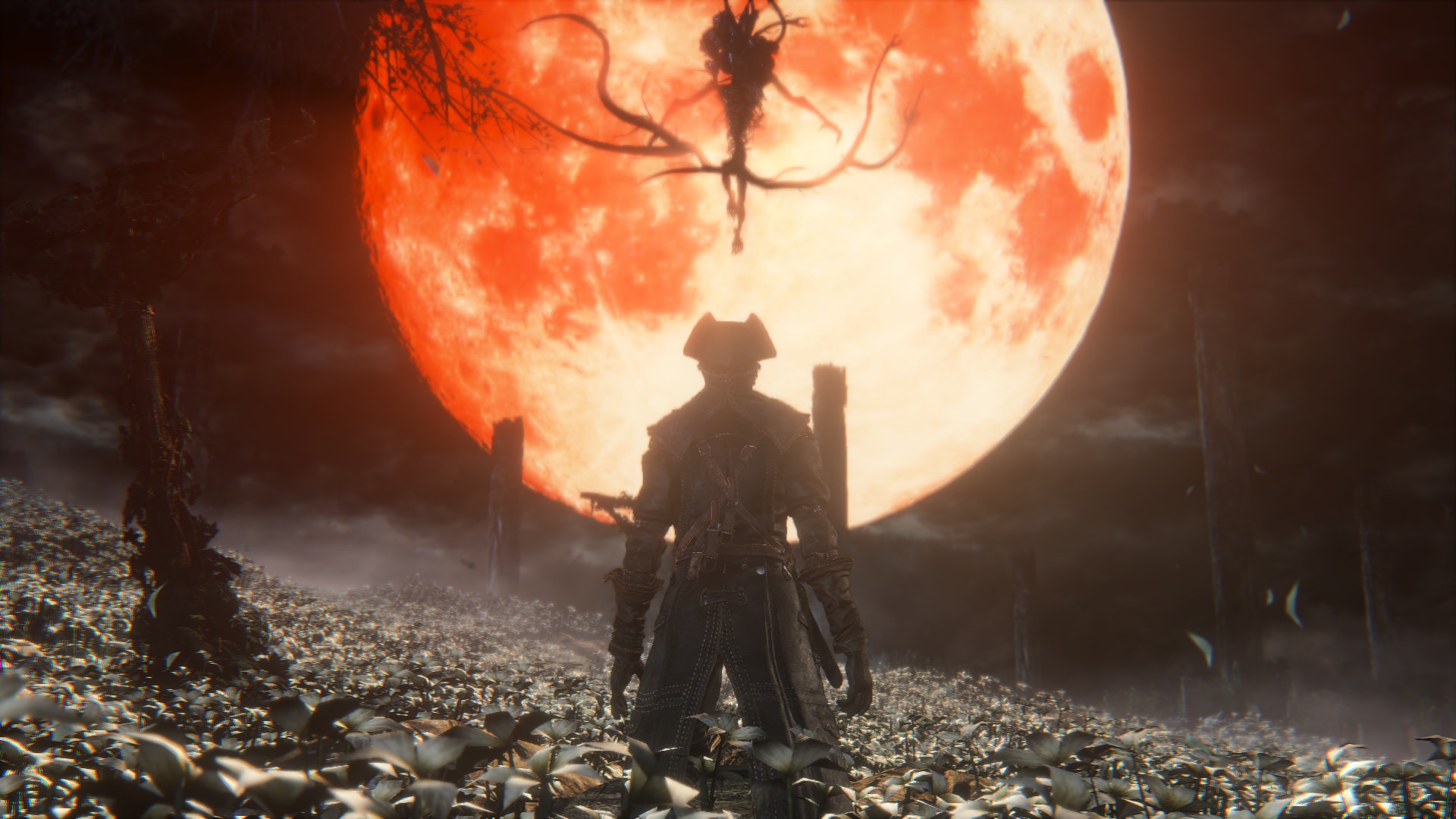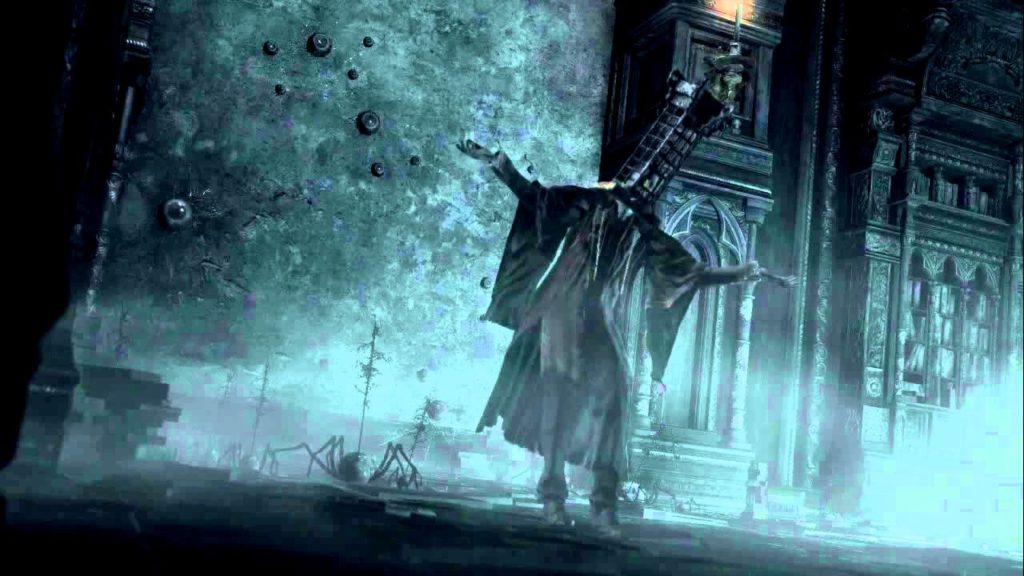
A few years ago, a friend of mine used those words to convince me to buy a game. I’d heard of the developer before and knew about the collection of titles they’d produced. They were, and still are, staples in the collection of any video game enthusiast. Despite this, I’d never played a single entry in the series – I’d simply never got around to it.
But after the good things I’d heard, and considering my passion for story-telling, I decided to give the new release a go.
The game was Bloodborne, a From Software title so revered by the gaming community that even now, you’d be hard-pressed to find a negative review. And for good reason. The game is a masterpiece. I fell in love when I first laid eyes on Central Yharnam and that love persisted, despite my many deaths to an axe-wielding executioner not long after. The setting, the gameplay, the trick-weapons – I couldn’t stop playing. But there are more than enough articles discussing all of that.

I’m writing this because 4 years on and 5 playthroughs later, that sentence has stuck with me:
‘The story’s amazing, you’ve got to play it.’
After slaying the final boss and sitting through the credits, I knew that what he’d said to me wasn’t quite right – in fact, it was down-right wrong. As someone who loved (and still loves) to write, I wanted desperately to tell him that Bloodborne was not a ‘story’ game. It lacked a traditional protagonist-arc and showed only vague narrative-driven conflicts. There was no strung-out plot or clear character roles; even the premise seemed bizarre.
Yet, I understood exactly what he meant.
In all my snobbery as a self-proclaimed writer, I wanted nothing more than to correct his flawed statement by dissecting those definitions and explaining why it wasn’t a ‘story’ that made Bloodborne enjoyable, because in the normal sense – it didn’t really have one.
But as a lover of video games, all I could do was agree with him.
Bloodborne has an incredible story.
But my other-self isn’t wrong. In the typical sense of the word, it doesn’t have a set plot like traditional RPGs; there is no transparent premise which underpins our desire to progress the storyline; there is no clear pacing, or obvious exposition.
So why? How do games keep us playing when there are no discernible features of the dramatic structure which we have been conditioned to recognise? The protagonist-arc, the character interaction, the set-up, the climax, the conclusion. How do games fair when they take a more unorthodox approach to story-telling?
Well, that’s exactly what I aim to unravel.
As the gaming world has developed, plenty of titles have relied on non-traditional writing methods and techniques to claim their place as masterpieces. And some have missed the mark so badly that their attempts to break the mould of conventional storytelling have come across as poor, nonsensical, or even lazy.
So, let’s begin with the game that started it for me, the game that made me realise just how much more can be done with writing in video games than meets the eye, the game that inspired me to write all of this in the first place. Bloodborne.
Or more specifically: how Bloodborne uses ambiguity effectively to create an utterly compelling narrative.
If the ‘true’ secret ending of Bloodborne didn’t leave you bewildered and confused then I commend you on your ability to make sense of insanity. For those who haven’t played the game, *SPOILER* you end up transforming into a baby squid, convulsing on the floor, being cradled by a life-size, living doll.
Yeah, I know. Weird.
Yet, the moment the game had finished, I was straight on the internet to find out what it actually meant. It was then that I discovered entire websites, YouTube channels and forums, dedicated to analysing the narrative of the game and making sense of it all.
For me and so many others, Bloodborne left us with the desire to discover more, to connect the dots, to play it through again in case there was anything we missed (and there were droves of things we missed).
But how did it do this?
It perfects its use of the ambiguous to pique the player’s interest.
Ultimately, every piece of media is trying to fashion a hook that draws an audience. It has to give its viewers, players or readers a reason to care about the events that take place. Whether an article with an outrageous headline; a film with a conflict-driven opening, or a game with relatable, interesting characters, curiosity is what drives an audience. They want to find out more and see what happens next. Without a reason to care, even the most detailed, intricate worlds and settings can be easily ignored by those they’re intended for.
Now, this is all fairly obvious, but what often gets overlooked is the number of different avenues which can be taken to achieve it.
The opening gameplay and scenes of a video game are the most important in creating this hook.
Where Final Fantasy VII used action, and The Last of Us used emotion, Bloodborne uses ambiguity.

On the surface, the one sliver of information you are given at the beginning of your adventure is hardly relevant at all for the rest of the game. And the limited NPC interactions only serve to create more questions. But it’s the implicit promise given to the player that the game has far more to it which keeps you tiptoeing around the cobblestone streets and grinding for those extra Blood Echoes.
By throwing you into a world without a clear storyline, where the protagonist has no history, and where their motives are blurred, it creates a sense of intrigue. The audience aren’t just wondering what the point is, they actively want to discover what it is.
The human impulse to make sense of whatever is put in front of us is the driving force which can make ambiguity so effective.
As is right, we can’t talk about Bloodborne without mentioning the author and collection of stories which inspired it. H.P. Lovecraft’s ‘Cthulhu Mythos’, despite not being so celebrated in its own time, is much loved by readers today for the same reasons as Bloodborne. It was not just the celestial undertone and enemy designs that Bloodborne drew from Lovecraft – the entire premise (once you can identify it) is taken from Lovecraft’s literary philosophy of Cosmicism, the idea that human existence is insignificant and objectively futile.
On a human-level, this manifests as the inability to comprehend what is greater than ourselves, and in the case of both Bloodborne and Lovecraft, this is a God-like race whose motives and actions are impenetrable to human thought.
The struggle to understand the ‘higher plane of existence’ as it is referred to in the game, can translate only as controlled ambiguity in the experience of the player.
If you want a fantastic, relatively short example of the fear and intrigue this can create, I would recommend ‘The Nameless City’, a short-story by Lovecraft. It summarises Cosmicism’s effect well, leaving the reader with a thirst for answers to questions which cannot be fathomed in the first place.

Despite its seemingly bizarre world, Bloodborne’s lore connects flawlessly. Each individual component of Yharnam’s history and the environment it now finds itself in has been well thought-through, with extremely fine care taken to ensure the context lines up and makes sense when analysed. The pay-off for piecing these elements together and grasping an understanding (no matter how small) of the world is what keeps the narrative worthwhile. Although ambiguity is effective, it needs to have some sensibility on the player’s level to ensure that the weird and wonderful does not mutate into the complicated and uninteresting.
As you play through Bloodborne, you will find yourself forming conclusions from details you encounter throughout the world. Minor NPC story-arcs will help tie together certain things that you couldn’t quite understand before. More often than not, these will breed more questions, but the gratification our brains receive from putting things in their place is the most satisfying thing we can experience as an audience. At a fundamental level, this is the formula that drives the narrative experienced by the player in Bloodborne.
FromSoftware have made this writing method near-perfect, creating a sense of cryptic dread through both the sequence-based narrative of the player’s journey AND the underlying premise itself, leading to immediate in-game curiosity AND the desire to make sense of the world around you.
Don’t get me wrong, Bloodborne’s storytelling alone is not what makes it one of the greatest games of all time. From the gameplay to the aesthetics, the people over at FromSoftware pretty much nailed it in every department, but it is the narrative and worldbuilding that makes Bloodborne so unique.
I could happily spend another 20,000 words discussing the intricacies of the lore and each aspect of Bloodborne’s narrative format, but for your sake I will leave it there for now.
Although not exclusively synonymous with Bloodborne, when considering ambiguity’s role in video game narratives, there are few titles as significant.
Ambiguity in video games can make for an extremely effective technique in crafting a story, and the elements I have discussed can be found across the industry. I hope now you can more easily identify when a game is utilising your desire to piece-together and understand.
So, when you next yearn for answers in a video game, excited to see what it has in store, ask yourself:
Why do I want to find out?
Perhaps a compelling plot or relatable characters have obliged you to care, making you desperate to see what will become of the world you now cherish so deeply.
Or maybe, without you even realising it, a touch of the ambiguous is urging you on.

18 responses